Dixie Betrayed (53 page)
Authors: David J. Eicher

Alexander Gardner’s image of the burnt district on April 6 includes picturesque destruction from the evacuation fire. The size of the inferno was staggering.
Library of Congress
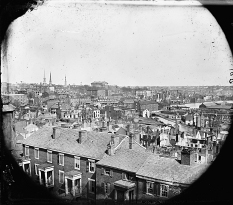
A view of the city from the Gamble’s Hill area reveals the skeletons of buildings that stood throughout the war only to fall at war’s end. Visible on the horizon are the Capitol and Customs House, as well as church steeples.
Library of Congress
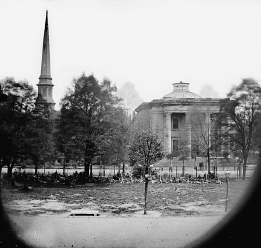
Richmond’s City Hall (right) stands on Broad Street as a magnificent Greek Revival structure, built in 1815. The Broad Street Methodist Church is at left. In the foreground of this 1865 image are Union occupation troops resting amid stacked rifles.
Library of Congress
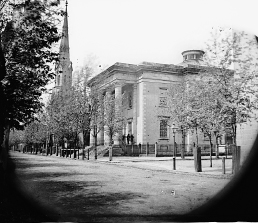
City Hall housed all the functions of the city government during wartime Richmond. The city grew by several factors as soldiers and office seekers swelled in from the countryside, creating impossible problems that would frustrate the population throughout the struggle.
Library of Congress
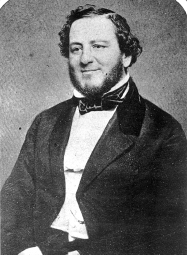
The “brains of the Confederacy” and “Jeff Davis’s right hand,” Judah P. Benjamin was born in the British West Indies, the child of Sephardic Jewish settlers. A close friend of Jefferson Davis’s, he served as attorney general and then secretary of war in the Confederacy. He quarreled with P. G. T. Beauregard and Stonewall Jackson and was chastised regularly by the Confederate Congress. Benjamin resigned under intense pressure but was then named secretary of state. He was the most influential Jewish politician in American history.
National Archives and Records Administration
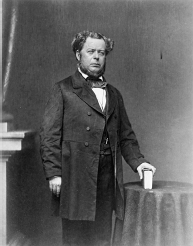
Stephen R. Mallory, born in Trinidad, was a Floridian chosen for political balance to be Jefferson Davis’s secretary of the navy. He began with a navy consisting of twelve small ships. Bitterly attacked by members of Congress for inefficiency and lack of aggressiveness, he weathered the assaults and lasted throughout the entire war.
National Archives and Records Administration
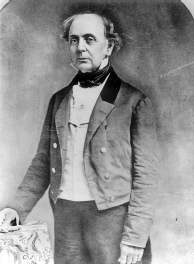
Aristocratic Richmonder Joseph C. Mayo served as the city’s mayor during the war. He faced the task of placating civilians in a rapidly growing city that was often short of supplies and under a government that seemingly didn’t care. In April 1863 a “bread riot” erupted in the city, with more than one thousand assembling and protesting the lack of available food, ransacking stores, and screaming in anger. Mayo appealed to the crowd as Jefferson Davis passed out a few coins to try to suppress the rioters, who eventually dispersed.
Cook Collection, Valentine Museum
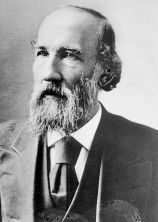
Alabama lawyer Leroy P. Walker was chosen as the Confederacy’s first secretary of war for balance of representation across the South after the state’s two most prominent politicians turned down the office. Jefferson Davis made all the decisions and treated Walker mostly as a figure-head; after seven months Walker no longer could bear the arrangement, and he resigned to take up a short-lived military command. He then returned to practicing law in Alabama.
Library of Congress
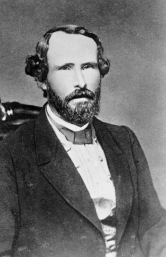
A grandson of Thomas Jefferson, George Wythe Randolph drafted Virginia’s conscription law and, in 1862, became Jefferson Davis’s secretary of war. He constantly advised Davis to attend to battles in the west, with only partial success. Frustrated with Davis’s reluctance to follow his advice, Randolph resigned in late 1862 and two years later left for Europe to ride out the rest of the war.
Library of Congress
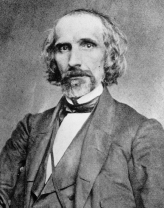
Another Virginian, James A. Seddon, held the longest tenure as Confederate secretary of war, from late 1862 to early 1865. Inexperienced as an administrator and lacking military knowledge, he nevertheless served very capably and weathered criticism from nearly all quarters, save for his good relationship with the president. After the war he “considered his life to be a complete failure.”
National Archives and Records Administration
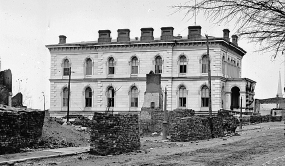
The U.S. Post Office and Customs House, a Tuscan-Italianate edifice constructed in 1858, stands on Richmond’s Main Street, between Tenth and Eleventh streets. The Confederacy took over this building and used it as the Treasury Department building and as an executive office for Jefferson Davis. The Confederate State Department met on the building’s second floor, which also hosted cabinet sessions. The Confederate president’s office, where much of the business of the war took place, existed on the third floor of this building, facing the Capitol.
Library of Congress
